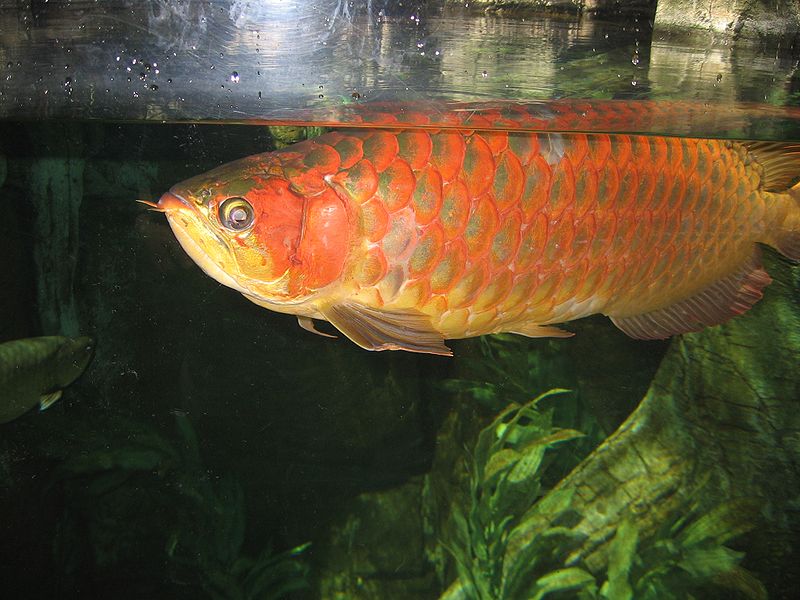Tropical fish can be found in aquatic tropical environments around the world. It includes both freshwater and saltwater species and they are often kept in aquariums. Freshwater tropical fish are more commonly kept than saltwater tropical fish because fresh water sources are more common such as tap water.
Tropical fish are great household pets. If you’ve seen a lovely aquarium of tropical fish somewhere and you’re thinking of owning some tropical fish as well, then we’re here to guide you. Tropical fish need consistent, careful, and attentive maintenance. It’s not as simple as buying an aquarium, filling it with water and putting the tropical fish inside it because there are certain factors that need to be taken into consideration to be able to take good care of them. To help you out, we are going to give you some useful tips on how to care for tropical fish.
Prepare the Aquarium
The very first step is to prepare and set up the aquarium for your tropical fish. Try to find a good location to place the aquarium. Choose a spot that will be least stressful for your fish. A good location for an aquarium should be far from loud noises, high temperatures, frequent vibrations, and as well as windows and doors.
Begin with a freshwater tank of 20 to 50 gallons. Then, set up your aquarium with gravel, filter, plants, cycling fluid, rocks, and other decorations you want before choosing your tropical fish. After setting up the aquarium, let it sit and age for a least a week.
It’s also important to equip the aquarium with proper lighting to avoid heat accumulation and excess algae growth. You can also use dimmer devices to avoid startling fish when opening the lights.
Choose the Right Fish
After setting up the aquarium, you can choose an appropriate number of small river fish and make sure to do routine maintenance regularly. Do not overcrowd your aquarium to avoid having a smelly and unhealthy tank.
Starting with a small river fish for your first fish tank is great because they are the easiest to keep healthy in a small body of water like an aquarium. Aside from that, they can also handle fluctuations in acidity and temperature more easily compared to other larger tropical fish.
Introduce Your Tropical Fish to the Aquarium
You can’t just dump your new fish directly into the aquarium. They need to be able to regulate their temperature first and putting them into new water immediately can cause them distress. While your tropical fish is still in the plastic bag, float it in the tank for about half an hour. After that, open the back and put some of the tank water in it and let it sit for 15 minutes. Then, gently net the fish out and place it in the tank. You can leave the light of the aquarium off for a few hours or for the rest of the day.
Feeding Your Tropical Fish
If you have chosen an easy-to-care-for tropical fish, then feeding it will not be a problem. You can feed your pets with tropical fish food and a packaged of bloodworms or tubifex worms. Give them just enough to finish eating in two minutes. It’s advisable and safer to give them little food first than too much and you can just always add more.
Avoid overfeeding your fish. They should only be fed once every two days and their food should all be gone within two minutes. It’s because leftover food in the tank can become poisonous for fish.
When buying fish food, it’s better to choose a small package and just replace it as it runs low every few months because fish food can go stale relatively quickly. Store their foods in a moisture-resistant container and place it in a cool, dry area out of direct sunlight.
Monitor the Temperature Daily
It’s also important to test the water in the aquarium daily to make sure that the temperature is consistent and in the ideal range for your tropical fish. The ideal temperature for freshwater tropical fish is between 74-82 degrees Fahrenheit. For saltwater tropical fish, the recommended temperature is between 75-80 degrees Fahrenheit
Cleaning and Maintaining the Tank
To clean and maintain the fish tank, you can siphon out some water each week to pull up debris that accumulates at the bottom of the slope at the front of the tank. You can change two gallons of water every week and more for larger tanks. But do not change more than one-quarter of the water at once.
When changing the water, it’s better to fill the bucket and let it sit overnight first to make sure that it’s not too cold and does not have chlorine in it. You can also use some water conditioner and let the water sit half an hour before pouring it into the tank. You can let the water fall on your hand in the tank water to keep the flow of the water from ruining the gravel.
The filter of the aquarium should be replaced each week as well. Cleaning the filter will depend on the kind or brand you use but you can definitely find some instructions on the package on how to clean the particular type you have.
Tropical fish are beautiful pets and they are easy to care for. They are also fascinating to look at and can give you a relaxing feel at home. We hope the tips we gave will be able to help you care for your tropical fish.


